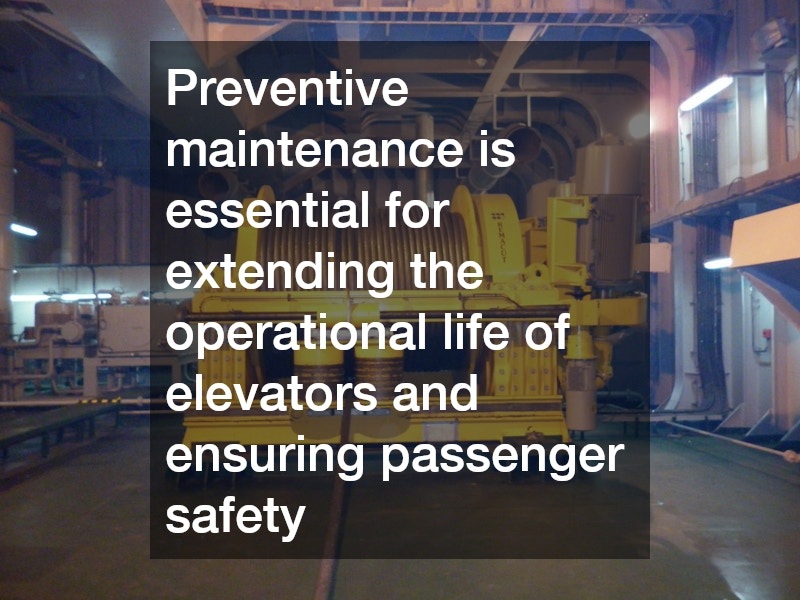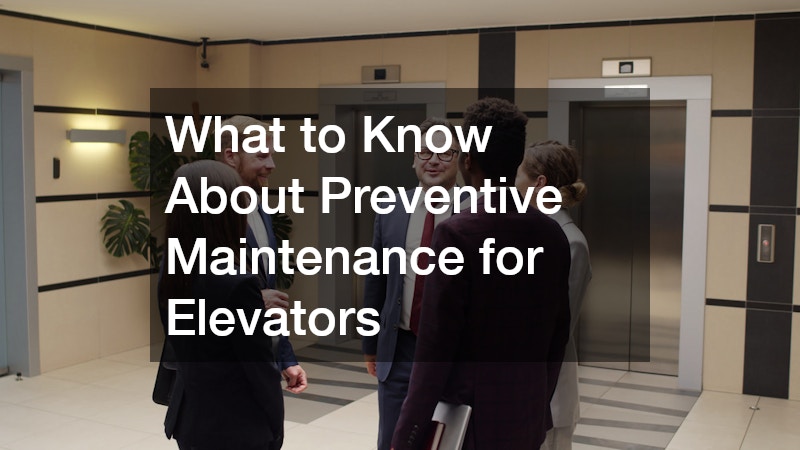Elevator maintenance is a crucial aspect of building management that often goes underappreciated until a problem arises. Regular maintenance ensures that elevators operate smoothly and safely, minimizing downtime and enhancing user experience. Without a structured maintenance schedule, minor issues can evolve into significant problems, leading to costly repairs and potential safety hazards.
Building owners and managers must prioritize elevator maintenance to comply with safety regulations and provide reliable vertical transport solutions. Investing in preventive maintenance ultimately protects the value and functionality of the building’s infrastructure.
The process of elevator maintenance involves inspecting, testing, and servicing various components, including the motor, cables, and control systems. Technicians conduct routine checks to identify worn parts or malfunctions that could impede elevator performance. By proactively addressing these issues, maintenance teams can prevent unexpected breakdowns and extend the lifespan of elevator systems. This preventative approach is not just about fixing what’s broken, but about ensuring that everything operates at optimal levels, thus mitigating the risk of accidents. Regular maintenance schedules and recorded updates are vital components of effective elevator management.
Environmental factors such as dust, humidity, and temperature fluctuations can affect elevator performance over time. Regular maintenance checks help to mitigate these environmental impacts, ensuring that the elevator runs efficiently no matter the conditions. Additionally, an effective elevator maintenance program can lead to significant cost savings by reducing the likelihood of expensive repairs and by using energy-efficient technologies that lower electricity consumption. Understanding these particulars highlights the value of investing in elevator maintenance beyond immediate functionality, offering long-term economic and safety benefits.
Benefits of Preventive Maintenance
Preventive maintenance is essential for extending the operational life of elevators and ensuring passenger safety. Elevators are intricate machines that require regular attention to stay in optimal working condition. Preventive maintenance programs are designed to anticipate and address potential problems before they result in system failures. These programs include regular inspections, hardware adjustments, and replacements of aging components. As a result, building operators experience fewer breakdowns and emergency repairs, which translates to reduced operational costs and improved tenant satisfaction.
Safety is another critical benefit of preventive maintenance for elevators. Proper maintenance ensures that all safety mechanisms are functional and up-to-date with current standards. This includes testing emergency brakes, ensuring proper alignment of doors, and checking the operation of sensors and alarms. Well-maintained elevators significantly reduce the risk of accidents, providing peace of mind to building occupants and helping property owners avoid potential liability issues. The regular oversight of these safety components is essential to protecting both passengers and building assets.
Moreover, preventive maintenance can lead to enhanced performance and efficiency of elevators. Over time, elevators can experience wear and tear that degrades their functionality and slows down their operation. Maintenance technicians can adjust the drive system, calibrate control mechanisms, and lubricate moving parts to ensure smooth operation and energy efficiency. This maintenance not only lowers energy costs but also improves ride quality, making daily operations more pleasant for users. Ultimately, preventive maintenance is a proactive measure that creates a more reliable and efficient vertical transportation experience within any building.
Implementing a Maintenance Plan
Implementing a comprehensive elevator maintenance plan requires collaboration with certified service providers. These professionals possess the expertise needed to develop tailor-made maintenance schedules based on the specific needs and conditions of each elevator system. A maintenance plan typically includes regular inspections, cleaning, adjustments, and replacements where necessary. By engaging expert technicians, building managers can ensure that their elevators receive the attention they need to remain compliant with safety regulations and industry standards. Partnering with reputable service providers also provides access to the latest technology and innovations in elevator maintenance.
It’s important to outline a clear maintenance schedule that aligns with the demands of the building and its occupants. High-traffic environments such as commercial buildings may require more frequent checks compared to residential buildings. Digital maintenance logs and automation can help keep track of maintenance tasks and alert managers when inspections are due. This approach facilitates efficient coordination of maintenance activities while minimizing disruptions to elevator availability. Building managers should also provide feedback to service providers to address any areas that require additional attention or improvement.
Lastly, regular training and development for maintenance personnel should be emphasized to stay abreast of emerging trends and safety practices in elevator maintenance. Ongoing education ensures that technicians use the most effective techniques and tools for servicing modern elevator systems. Training programs should also cover emergency response protocols to swiftly tackle any urgent situations. A strong maintenance culture supported by skilled personnel enhances the overall performance and reliability of elevator systems. By creating an environment of excellence and professionalism, building operators can ensure that their elevators offer a dependable and secure mode of transportation for all users.


